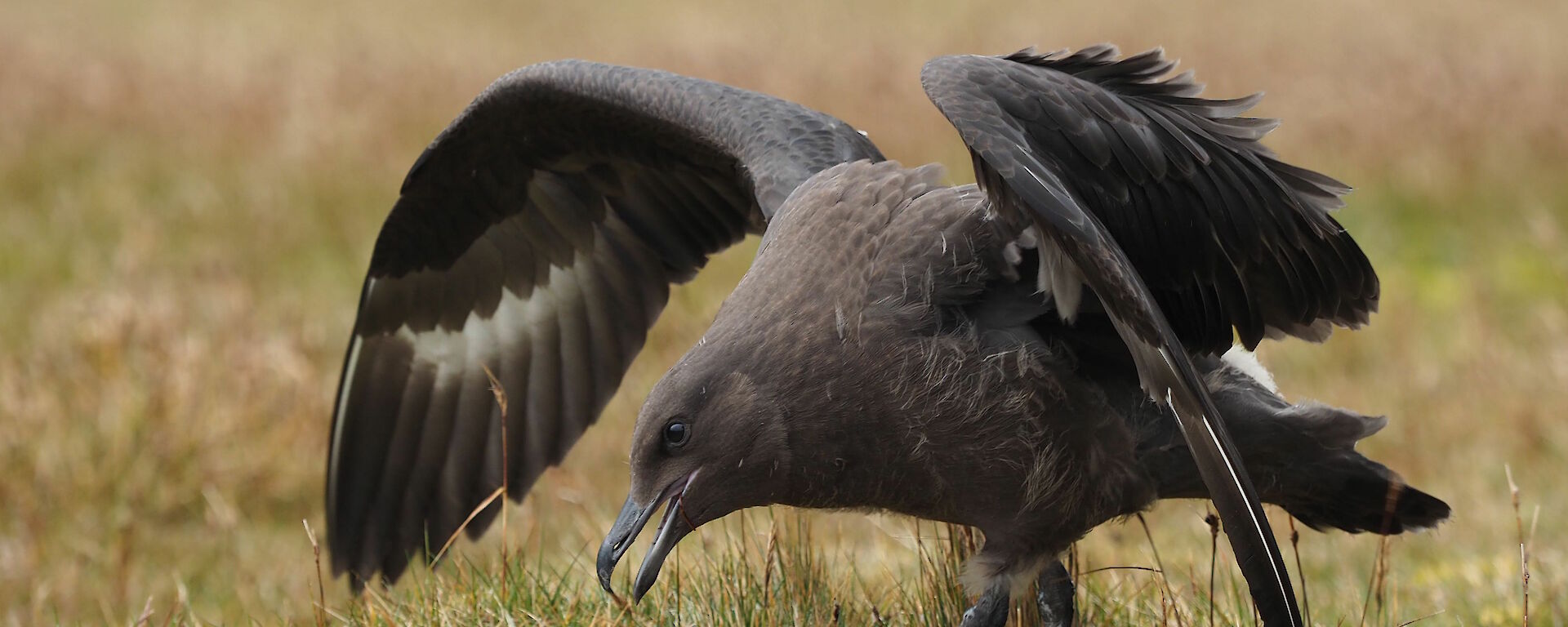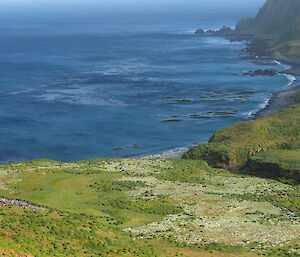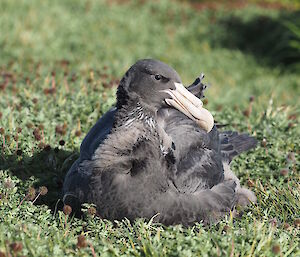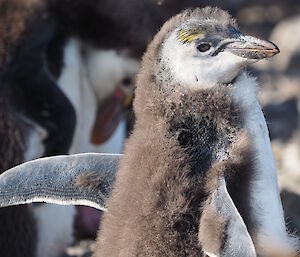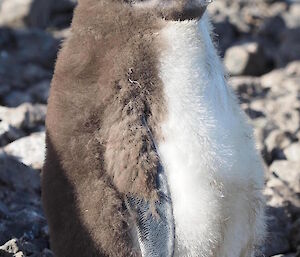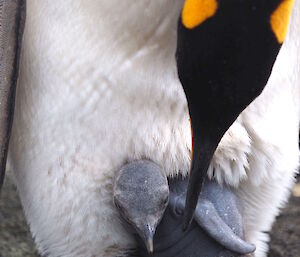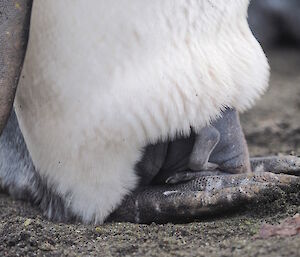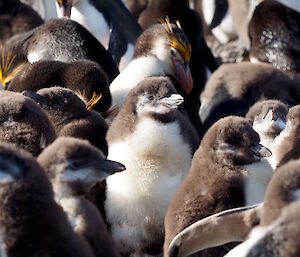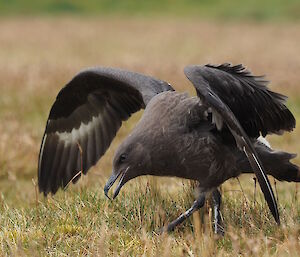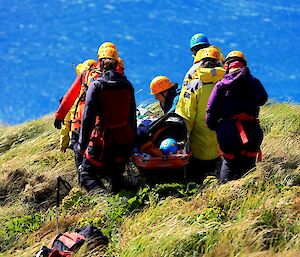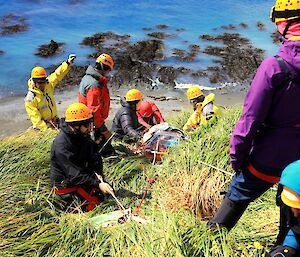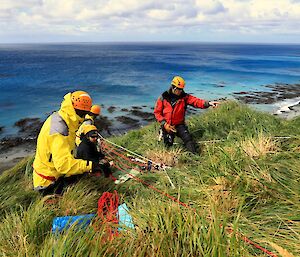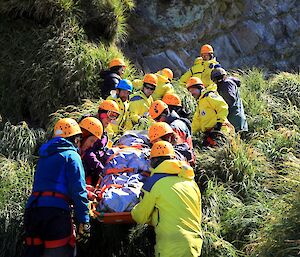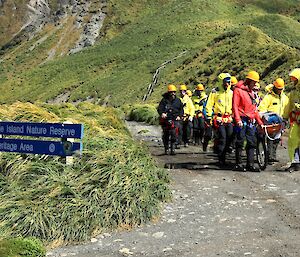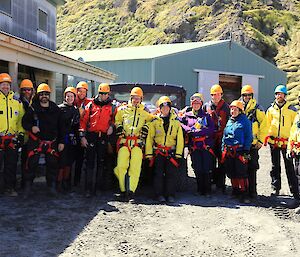With summer in full swing, lots of seabird species that breed here are looking after rapidly growing chicks, most of the chicks are already developing adult plumage (feathers). As a remote speck of land in the Southern Ocean, Macquarie Island Nature Reserve and World Heritage Area provides essential sub-Antarctic breeding habitat for these seabirds.
Four types of chicks are prominent at the moment in the Sandy Bay area on Macquarie Island’s east coast.
Royal penguin (Eudyptes schlegeli) chicks are transitioning from their chick fluff (down) to their adult feathers. Some are starting to develop their distinctive yellow crests. Most of these chicks will start to go to sea in late February to learn to fend for themselves.
Northern giant petrel (Macronectes halli) chicks are nearly fully grown. Their parents have been looking after them since August in scattered colonies or solo nests along Macquarie Island’s rugged coast.
Skua (Catharacta lonnbergi) chicks have nearly all their adult feathers, with just a small amount of brown fluff left. They’ve been fed all summer on prey their parents bring them, often royal penguin eggs or scavenged remains of other animals. The chicks have been stretching their new wings and will fledge (take their first flight) soon.
The king penguin (Aptenodytes patagonicus) chicks are the newest arrivals. Eggs have been incubated on the parents’ feet and started hatching in mid-January. The chicks will remain in the colonies all winter, they will not go to sea for about twelve months!
By Andrea (Ranger-In-Charge)

